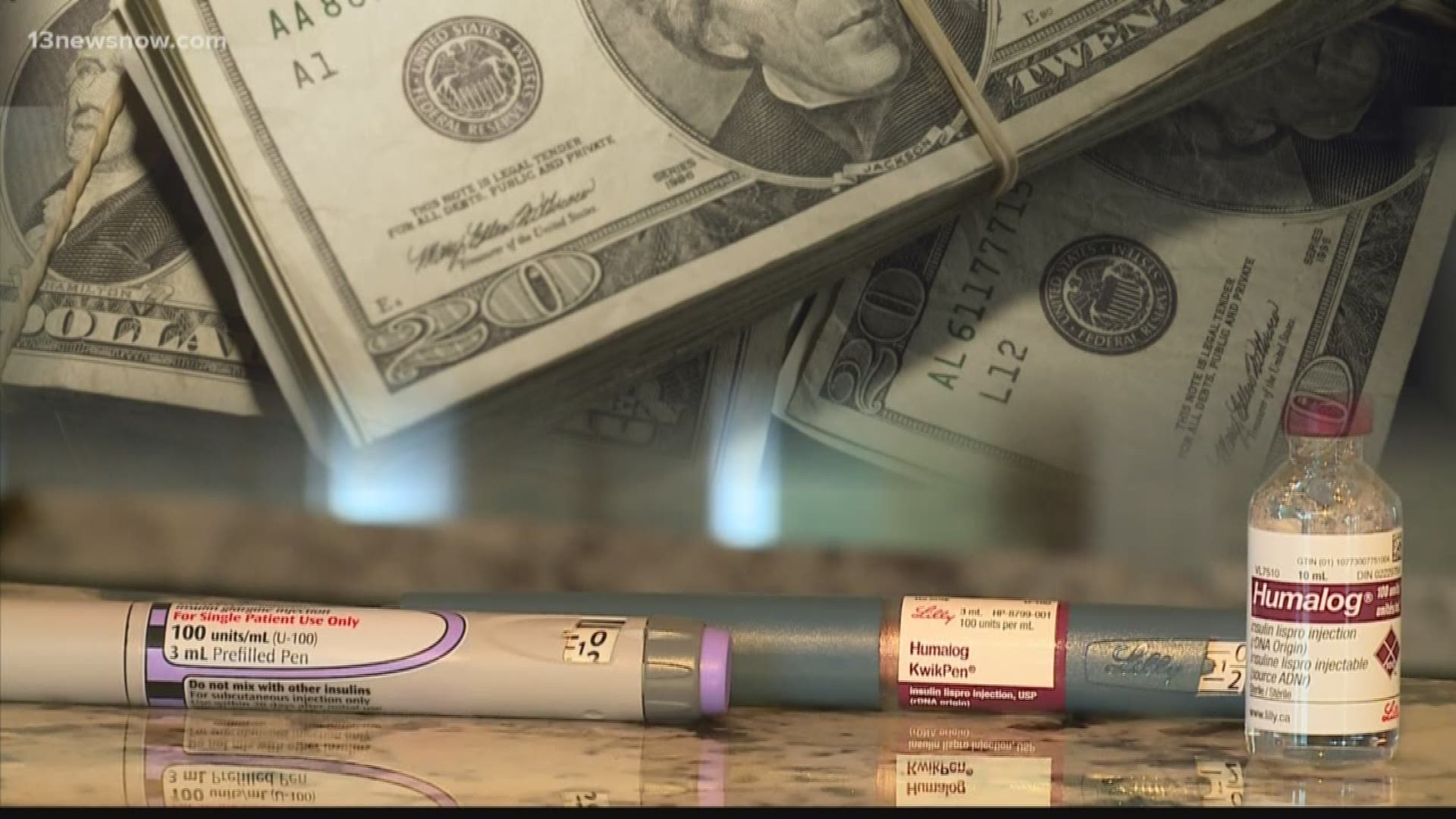NORFOLK, Va. —
A group of senators is demanding answers from the three insulin manufacturers in the United States to explain the skyrocketing costs of insulin.
U.S. Senator Tim Kaine, Senator Patty Murray and their Democratic colleagues on the HELP Committee sent letters to Eli Lilly, Novo Nordisk and Sanofi asking for more information regarding increasing insulin costs.
Life-saving insulin is getting more difficult for families to obtain.
The Congressional Diabetes Caucus reports the cost of insulin has doubled since 2012. Adult patients use two or more vials a month, with each vial costing more than $300.
Chesapeake mother Lisa Genco’s 14-year-old son Joey has type one diabetes. He wears an insulin pump 24/7.
“It’s very challenging on a day to day basis,” said Genco. “So you’re trying to think five steps ahead, like ‘well I’m eating say 40 carbs for breakfast but if I’m going to go workout, then I’m not going to want to give myself as much insulin.’”
The soaring cost is causing patients to go to extreme lengths to find affordable insulin. Genco travels to Canada, where she said she can get a vial for $36, compared to the U.S. where she said she’d have to pay $300.
“These kids and adults, they need insulin every day to live, and to force these people to pay this kind of money to live every day, it makes me really angry,” said Genco.
The high cost is also turning deadly. One in four patients report rationing their insulin, meaning they’ll give themselves less in order for the insulin to last longer. In the end, it will save them money.
“If it’s a young adult, they’ve just gotten a job. They don’t have insurance and they might have student loans. A thousand dollars is huge for them,” said Savannah Bolin, Development Director for JDRF, a non-profit dedicated to type one diabetes research.
Advocates said the cost of insulin is projected to go up. They added, if something doesn’t change, families will suffer.
“If the cost of insulin continues to rise, we are going to lose more and more individuals with type one diabetes. A lot of the adults are already burdened by this disease and struggling to pay for it. I think we’re going to lose more individuals to that,” said Bolin.

